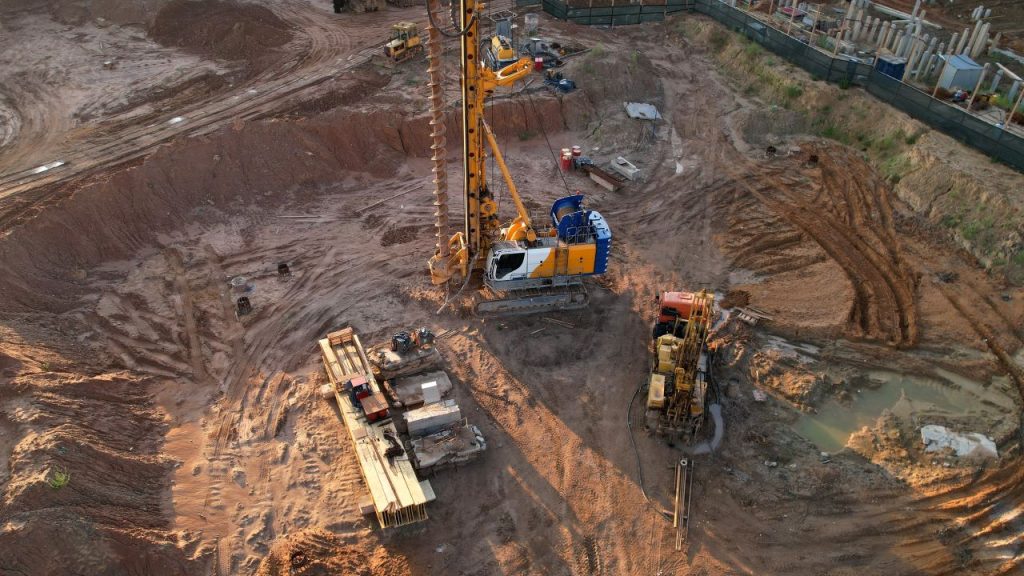The 2-Minute Rule for Consulting Engineers
The 2-Minute Rule for Consulting Engineers
Blog Article
All About Consulting Engineers
Table of ContentsGetting The Consulting Engineers To WorkThe Best Strategy To Use For Consulting EngineersThe smart Trick of Consulting Engineers That Nobody is Talking AboutThe smart Trick of Consulting Engineers That Nobody is Talking AboutAll about Consulting EngineersExcitement About Consulting Engineers
To offer the ideal experiences, we use innovations like cookies to shop and/or access tool information. Consenting to these innovations will certainly allow us to process information such as browsing habits or special IDs on this website.They perform site investigations, gather examples, execute laboratory tests, and examine information to examine the suitability of the ground for construction projects. Based upon their searchings for, geotechnical engineers offer suggestions for structure layout, incline security, preserving structures, and mitigation of geotechnical hazards. Consulting Engineers. They work together with other experts, such as designers, architectural designers, and building and construction groups, to make certain that geotechnical factors to consider are incorporated right into the total task layout and implementation
Examine This Report on Consulting Engineers
They translate the information to recognize the properties and actions of the dirt and rock, including their stamina, permeability, compaction characteristics, and groundwater problems. Geotechnical Analysis and Design: Geotechnical designers examine the data collected throughout site examinations to examine the stability and viability of the website for building projects. They execute geotechnical computations and modeling to assess factors such as birthing ability, settlement, incline security, lateral planet pressures, and groundwater circulation.
Structure Layout: Geotechnical engineers play a crucial function in creating foundations that can safely support the designated structure. They examine the soil problems and load demands to determine the ideal foundation kind, such as superficial foundations (e.g., grounds), deep foundations (e.g., heaps), or specialized techniques like dirt improvement. They take into consideration elements such as negotiation limits, birthing capacity, and soil-structure interaction to create optimal foundation layouts.
Here are some types of geotechnical designers: Structure Engineer: Foundation designers specialize in developing and assessing foundations for structures. They examine the dirt conditions, tons needs, and site attributes to establish the most suitable structure kind and design, such as shallow structures, deep structures, or specialized techniques like pile foundations.
The Ultimate Guide To Consulting Engineers

In the workplace atmosphere, geotechnical engineers use specialized software application tools to do computations, develop layouts, and evaluate data. They prepare records, evaluation project specifications, connect with customers and employee, and coordinate task activities. The workplace setting gives a conducive setting for research, evaluation, and collaboration with other professionals associated with the project.
They regularly check out task sites to perform site examinations, examine geotechnical problems, and gather information for analysis. These visits entail traveling to different areas, often in remote see here now or challenging surfaces. Geotechnical engineers might execute soil tasting, conduct tests, and screen construction tasks to make sure that try these out the geotechnical facets of the task are being applied correctly.
Fascination About Consulting Engineers

Before any structure is developed, designers need initially to analyze it. This is to see if the ground is suitable and durable adequate to safely start building and construction of a building. The procedure is done through geotechnical examination. It gives info on the physical homes of dirt earthworks for suggested frameworks and for the repair service of distress to earthworks that are brought on by subsurface conditions.
About Consulting Engineers
This info can be utilized for a whole lot much more. Maintain reading as we list down the several purposes of geotechnical examinations and why it is necessary in geotechnical engineering. Geotechnical site examination is important in the construction process because it intends to recognize and offer details on the site's subsurface conditions.

These consist of the groundwater conditions, engineering issues, kinds of dirts or rock, and measuring the thermal resistivity of dirts. Such conditions establish numerous variables, including how pricey the building and construction task will be, what kind of foundation is required, just how the informative post structure will be constructed, etc. No matter the sort of building being done, whether a house, pipe, or a substantial purchasing mall, a geotechnical examination needs to be accomplished.
Everything about Consulting Engineers
The vital actions in lugging them out continue to be the very same. They are: This is where geotechnical design takes place to comprehend the region's geology. It can be done via geologic mapping, photogrammetry, or geophysical approaches. Altogether, it is done to evaluate the physical conditions of the dirt.
As soon as this is done, the engineers will certainly deal with the customer to see what kind of construction they require. This is normally where they utilize borings or explorations to get soil examples. Depending upon the customer's requirements, these examples may additionally get tested in laboratories. Apart from this, the designers will also aesthetically analyze the dirt for rock and water.
These are generally done through geophysical examinations and scientific studies, which are fairly useful for uncovering below ground anomalies or energies. When engineers have actually conducted their investigation, they will certainly need to establish suggested solutions. They will after that offer services with just how to approach the site's building and construction. Recognizing subsurface problems before the building of the site is important to ensure that the structure is developed safely and can be sufficiently sustained.
Report this page